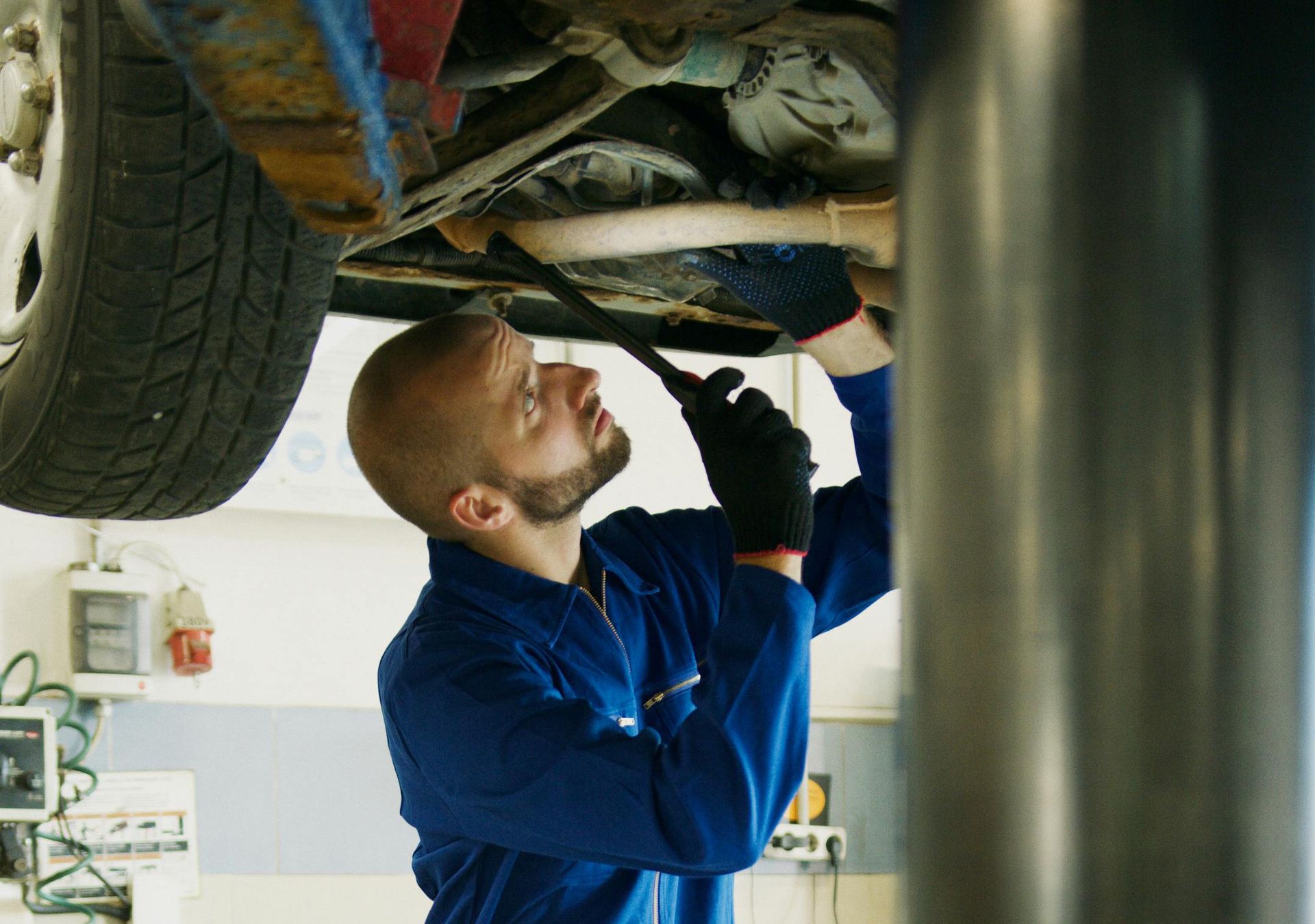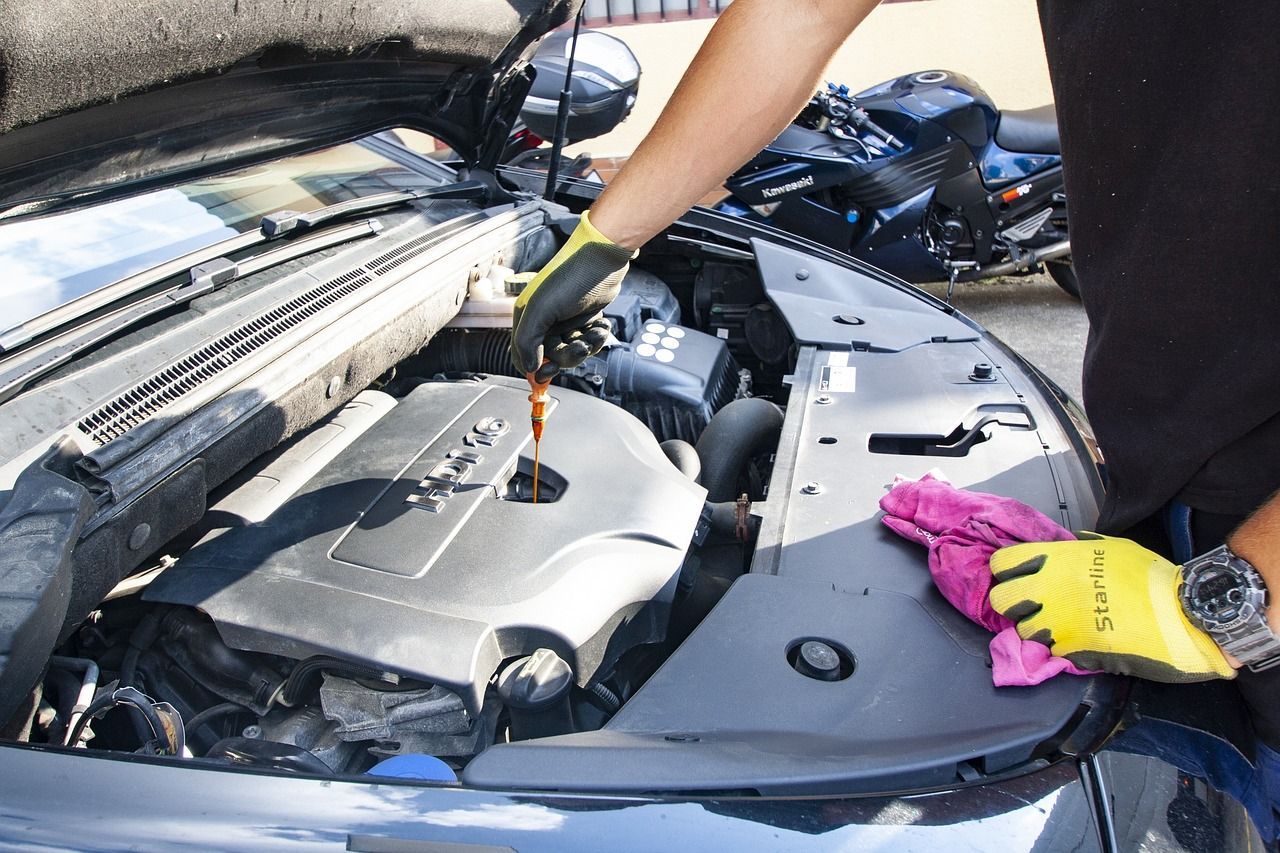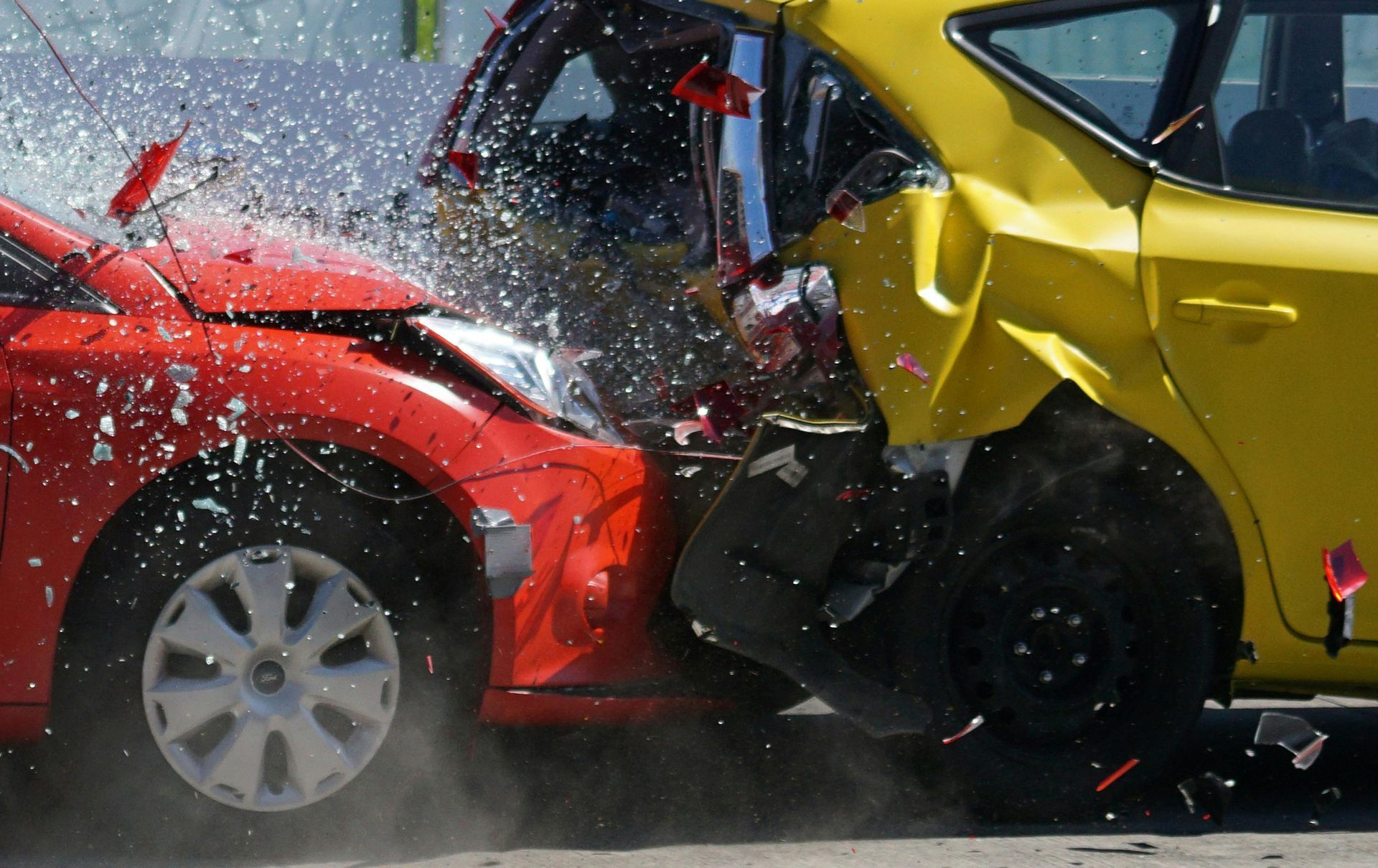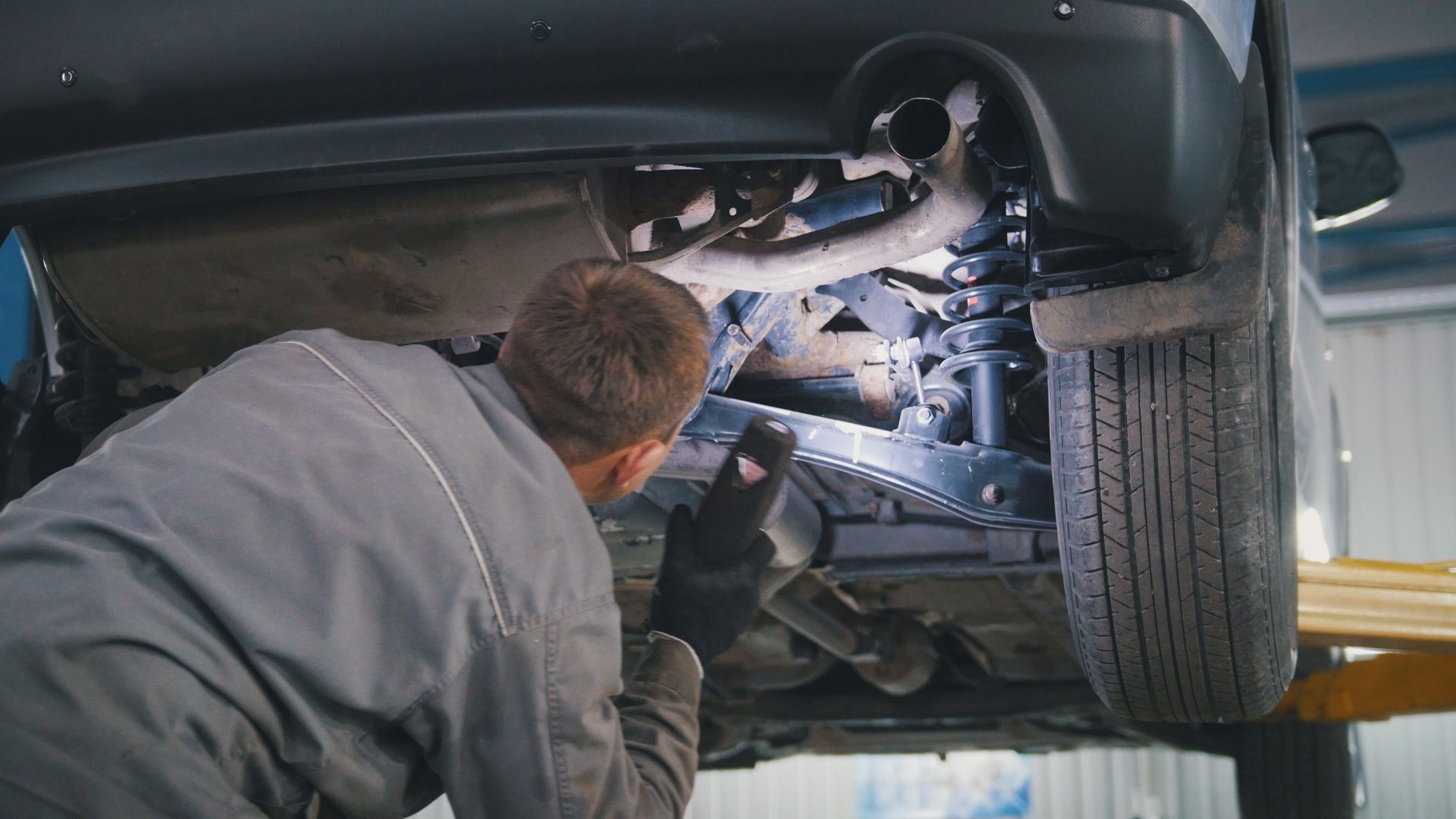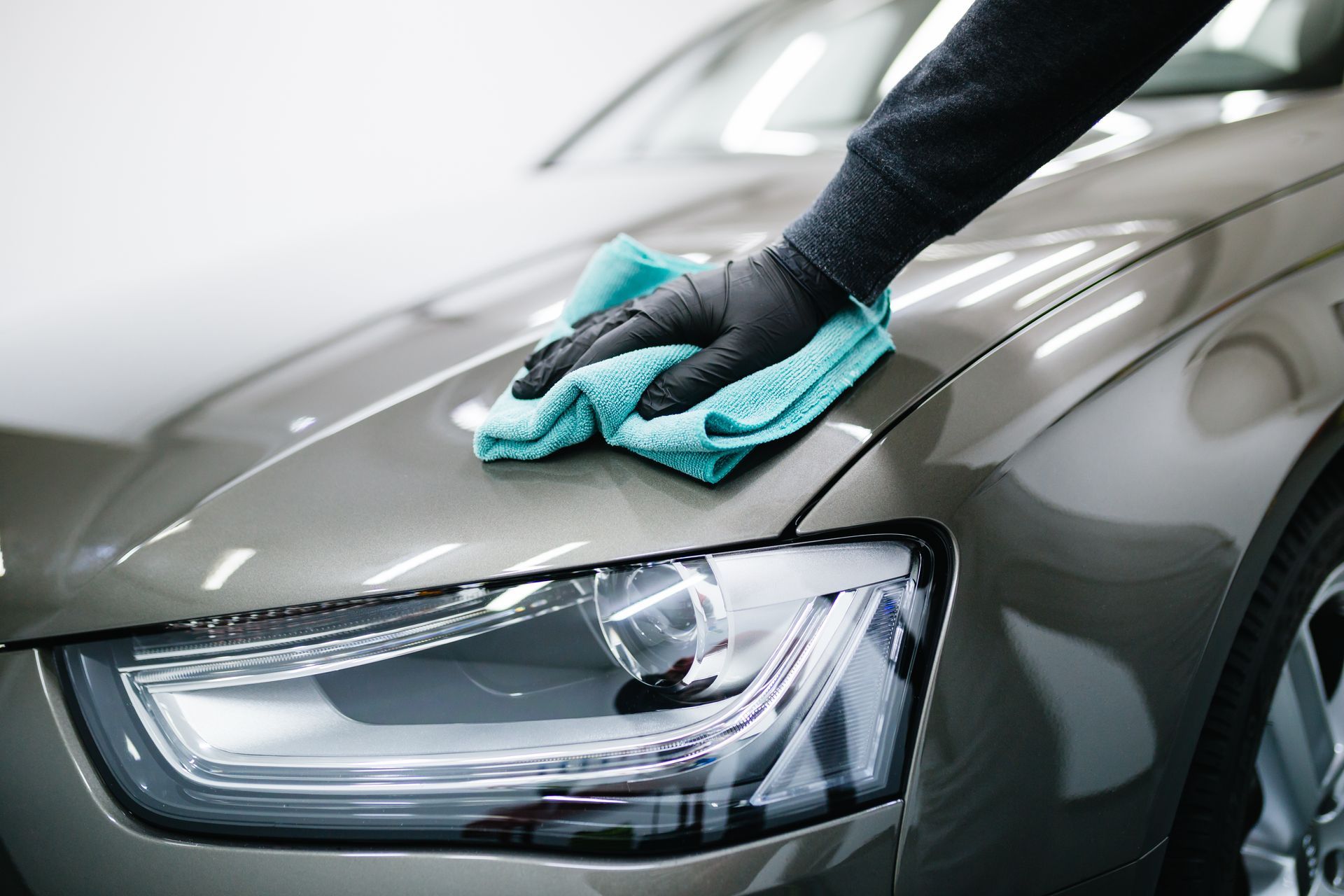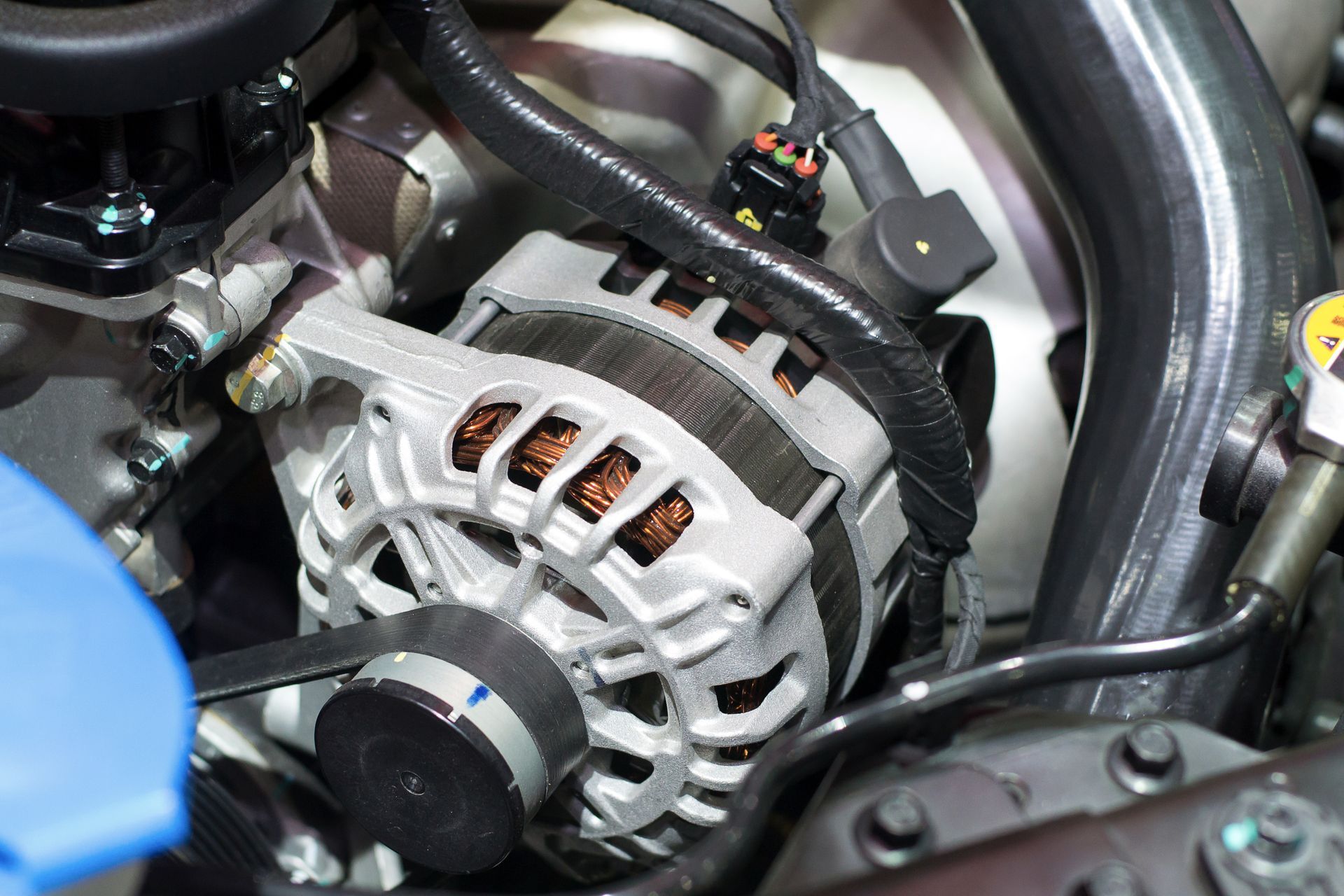By fmautomotive15
•
November 2, 2024
When it comes to the vast landscape of auto repair shops, one type stands out as the most prevalent among motorists seeking reliable service for their vehicles. This category of repair shop caters to a broad spectrum of car maintenance needs, offering an extensive array of services that go beyond just fixing mechanical issues. From routine check-ups to complex diagnostics, this type of shop serves as a one-stop destination for all things automotive. But what sets this common type of auto repair shop apart from the rest, and why do car owners gravitate towards its services? Key Takeaways General auto repair shops are the most common type due to their wide range of services. They offer maintenance, diagnostics, and skilled technicians for various vehicle makes. Specializing in diverse repairs and catering to different automotive needs. Provide convenience by offering multiple services under one roof. Quick lube shops are popular for fast oil changes and basic maintenance services. Understanding the Different Types of Auto Repair Shops When it comes to auto repair shops , there are three main types worth exploring. General auto repair shops offer a wide range of services, catering to most vehicle needs. Specialty auto repair shops focus on specific vehicle types or repairs, while quick lube shops specialize in fast oil changes and basic maintenance. General Auto Repair Shops: A One-Stop Shop for Most Services General auto repair shops serve as vital service centers where a wide range of automotive maintenance and repair needs can be addressed efficiently under one roof. These establishments are equipped to provide various maintenance services, such as oil changes, tire rotations, brake inspections, fluid top-ups, and filter replacements. Auto repair shops also offer repair services for issues like engine problems, electrical system malfunctions, transmission issues, and suspension repairs. Customers benefit from the convenience of having multiple services available in one location, saving time and effort compared to visiting different specialists for each need. In addition to routine maintenance and repairs, general auto repair shops often conduct diagnostics to identify potential problems before they escalate, helping prevent costly breakdowns. Skilled technicians at these shops are trained to work on a wide range of vehicle makes and models, ensuring that customers receive thorough service regardless of their automobile's brand. Specialty Auto Repair Shops: Focusing on Specific Vehicle Types or Repairs Specialty auto repair shops cater to specific vehicle types or concentrate on particular repair services, offering specialized expertise to address unique automotive needs effectively. These shops often focus on servicing a particular make or model of vehicle, such as luxury cars, sports cars, or classic cars. By honing their skills and knowledge on these specific vehicles, specialty auto repair shops can provide tailored services that may not be available at general repair shops. Additionally, some specialty shops specialize in particular types of repairs, like transmissions, brakes, or electrical systems, ensuring that they have the necessary tools and expertise to handle these intricate repairs efficiently. Customers who own vehicles requiring specialized care often turn to these shops for their in-depth understanding and experience with their specific automotive needs. While general repair shops offer a wide range of services, specialty auto repair shops provide a niche service that caters to the distinct requirements of certain vehicles or repairs, making them a valuable resource for car owners seeking expert attention for their unique automotive concerns. Quick Lube Shops: Fast Oil Changes and Basic Maintenance Quick lube shops provide convenient and efficient services for fast oil changes and basic maintenance tasks, catering to customers seeking prompt automotive care. These shops specialize in providing quick services without the need for appointments, ideal for individuals with busy schedules or those in need of immediate maintenance. Oil changes are a primary service offered by quick lube shops, ensuring that vehicles have clean oil for peak engine performance and longevity. In addition to oil changes, these shops often offer basic maintenance services such as fluid top-ups, filter replacements, and tire pressure checks to keep vehicles running smoothly. Customers frequent quick lube shops for their convenience and speedy service, making them a popular choice for routine maintenance needs. By focusing on essential services like oil changes and basic maintenance, these shops streamline the automotive care process, providing a hassle-free experience for customers. With their emphasis on efficiency and quick turnaround times, quick lube shops play a significant role in keeping vehicles well-maintained and road-worthy. The Most Common Auto Repair Services The most common auto repair services encompass essential maintenance tasks that guarantee the longevity and safety of vehicles. Services like oil changes, tire rotations, brake repair, battery replacement, and tune-ups are vital for maintaining peak engine performance and overall vehicle functionality. These routine services not only extend the lifespan of the vehicle but also contribute to safe and efficient driving experiences. Oil Changes: Essential for Engine Health Regular oil changes are crucial for maintaining the health and performance of your vehicle's engine. Oil serves as a lubricant, preventing friction between moving parts and carrying away heat to keep the engine running smoothly. Over time, oil breaks down and becomes contaminated with dirt and debris, reducing its effectiveness. Consistent oil changes help guarantee that your engine stays properly lubricated, reducing wear and tear on critical components and extending its lifespan. Failure to change the oil at recommended intervals can lead to a buildup of sludge, causing decreased engine efficiency and potential damage. Inadequate lubrication can result in increased friction, overheating, and even engine failure. By staying on top of oil changes, you can maintain excellent engine health, improve fuel efficiency, and avoid costly repairs down the road. Consult your vehicle's manual or a trusted mechanic to determine the recommended oil change schedule based on your driving habits and the type of oil used. Investing in regular oil changes is a small price to pay for the long-term health and performance of your engine. Tire Rotations and Replacements: Ensuring Safe Driving Ensuring safe driving and peak performance, tire rotations and replacements are among the most common auto repair services essential for maintaining vehicle safety and longevity. Tire rotations involve moving tires from one position to another on a vehicle to promote even tire wear, extending the lifespan of the tires and enhancing overall performance. By regularly rotating tires, drivers can prevent uneven wear patterns that can lead to dangerous blowouts or poor traction on the road, thereby contributing to a safer driving experience. Additionally, replacing tires when they are worn out is essential for maintaining excellent grip and handling. Worn tires can greatly impact braking distances and maneuverability, increasing the risk of accidents, especially in adverse weather conditions. By promptly replacing tires that are worn or damaged, drivers can ensure their vehicle's safety and performance on the road, reducing the likelihood of unexpected breakdowns or incidents. Regular tire maintenance, including rotations and replacements, plays an important role in promoting safe driving practices and vehicle longevity. Brake Repair and Replacement: Vital for Vehicle Safety Brake repair and replacement are critical aspects of maintaining vehicle safety and guaranteeing peak performance on the road. Properly functioning brakes are essential for safe driving, as they allow drivers to stop quickly and effectively in emergency situations. Regular brake inspections and timely repairs can prevent accidents and save lives. Neglecting brake repair can lead to serious consequences, such as brake failure or decreased stopping power, putting both the driver and others on the road at risk. Signs that indicate the need for brake repair include squealing or grinding noises, a vibrating brake pedal, or a longer stopping distance. To guarantee vehicle safety, it is recommended to have the brakes inspected by a professional regularly and to address any issues promptly. Brake repair services typically involve replacing brake pads, rotors, calipers, and brake fluid as needed. Battery Replacement: Maintaining Power Routine maintenance of the vehicle's battery is essential for ensuring excellent performance and reliability on the road. As one of the most common auto repair services, battery replacement plays a vital role in maintaining power within the vehicle. Over time, batteries can lose their ability to hold a charge effectively, leading to issues such as slow engine cranking or even failure to start. To prevent being stranded due to a dead battery, it is recommended to have the battery tested regularly and replaced when necessary. When it comes to power maintenance, a professional auto repair shop can assess the condition of the battery, identify any potential issues, and recommend the appropriate course of action. Whether it's a simple battery replacement or addressing underlying electrical system issues, ensuring that your vehicle's battery is in excellent condition is key to avoiding unexpected breakdowns and maintaining a smooth driving experience. Regular battery checks and timely replacements can help keep your vehicle running smoothly and reliably. Tune-Ups: Optimizing Engine Performance Maintenance of engine performance through tune-ups is an essential aspect of ensuring the longevity and efficiency of a vehicle. Tune-ups involve a series of inspections, adjustments, and parts replacements that help optimize the engine's operation. During a tune-up, components such as spark plugs, filters, and ignition systems are checked and replaced if necessary to guarantee proper functioning. By conducting regular tune-ups, mechanics can address issues like rough idling, poor acceleration, and decreased fuel efficiency, ultimately enhancing the overall performance of the engine. Engine performance can have a significant impact on a vehicle's reliability and lifespan. Neglecting tune-ups can lead to decreased power, increased emissions, and potential damage to the engine over time. Therefore, scheduling tune-ups at recommended intervals is vital for maintaining excellent engine performance and preventing costly repairs in the future. Whether it's a basic tune-up or a more thorough one, investing in engine maintenance through regular tune-ups is a proactive approach to keeping your vehicle running smoothly. Choosing the Right Auto Repair Shop for Your Needs When choosing an auto repair shop that suits your needs, it's crucial to take into account factors like your vehicle's type, age, and mileage. Moreover, conducting research on local shops by reading reviews and checking credentials can offer valuable insights into their reputation and quality of service. Don't hesitate to seek recommendations from friends and family who may have had positive experiences with specific repair shops. Consider Your Vehicle: Type, Age, and Mileage Understanding the specific characteristics of your vehicle, including its type, age, and mileage, is vital for selecting the most suitable auto repair shop to meet your needs. Different auto repair shops specialize in various types of vehicles, such as domestic, foreign, luxury, or specific brands. Knowing your vehicle's type guarantees you choose a shop equipped to work on it efficiently. The age of your vehicle is important as older cars may require more experienced mechanics familiar with classic models, while newer vehicles might need technicians trained in the latest technology. Additionally, considering your vehicle's mileage helps in determining the level of maintenance it may need. High-mileage cars often require different services compared to newer, low-mileage vehicles. Research Local Shops: Read Reviews and Check Credentials Conducting thorough research on local auto repair shops by reading reviews and verifying credentials is vital in selecting the most suitable service provider for your specific automotive needs. When researching auto repair shops, look for feedback from previous customers regarding the quality of services provided. Positive reviews can indicate a trustworthy and reliable establishment that offers excellent maintenance services for various vehicles. Checking the credentials of auto repair shops is essential to make sure they have the expertise and qualifications to work on your car. Look for certifications from reputable organizations like the National Institute for Automotive Service Excellence (ASE) or manufacturer-specific certifications. These accreditations demonstrate that the technicians have undergone training and have the necessary skills to perform maintenance and repairs on different vehicle makes and models. Ask for Recommendations: Get Input from Friends and Family Seeking recommendations from friends and family can provide valuable insights and guidance in choosing the right auto repair shop that aligns with your specific automotive needs. When inquiring about common car issues or general automobile repair, those close to you may have firsthand experiences with local shops and can offer trustworthy advice. Friends and family can share details about the quality of service, pricing, turnaround times, and overall customer satisfaction they have encountered, helping you make an informed decision. The Importance of Regular Auto Maintenance Regular auto maintenance is essential for preventing major problems by catching issues early on. Not only does it help maintain the value of your vehicle by preserving its resale price, but it also guarantees safety on the road. A well-maintained vehicle is a safer vehicle, making regular maintenance a top priority for every car owner. Preventing Major Problems: Catching Issues Early Maintaining your vehicle through consistent and thorough inspections is essential for identifying and addressing potential issues early on, ultimately preventing major problems down the road. Regular maintenance services play a vital role in guaranteeing the longevity and performance of your vehicle. Here are some key benefits of catching issues early through proactive automotive repair: Cost Savings: By identifying and fixing small issues early, you can prevent them from escalating into costly repairs later on. Enhanced Safety: Early detection of problems such as brake issues or tire wear can help secure your safety on the road. Improved Reliability: Addressing minor issues promptly can help sustain the overall reliability of your vehicle. Extended Vehicle Lifespan: Regular inspections and timely repairs can contribute to prolonging the lifespan of your car, saving you money in the long run. Maintaining Vehicle Value: Preserving Resale Price Preserving the resale price of your vehicle hinges greatly on the importance of consistent auto maintenance. Regular maintenance services play a vital role in maintaining your vehicle's value over time. By adhering to a routine maintenance schedule, you can address minor issues before they escalate into costly problems, thereby preserving the overall condition of your vehicle. Routine maintenance tasks such as oil changes, tire rotations, brake inspections, and fluid checks not only guarantee the best performance of your vehicle but also contribute to its longevity and resale value. When potential buyers see a well-documented history of regular maintenance, they are more likely to pay a higher price for your vehicle, as it gives them confidence in the car's condition and reliability. In essence, investing in regular maintenance services not only keeps your vehicle running smoothly but also safeguards its resale value. By staying proactive with maintenance, you can protect your investment and maximize the return when it comes time to sell or trade-in your vehicle. Ensuring Safety: A Well-Maintained Vehicle is a Safer Vehicle A diligently maintained vehicle not only operates at peak performance but also guarantees the safety of its occupants through regular auto maintenance practices. By prioritizing maintenance services, drivers can make sure that their vehicles are in top condition, reducing the risk of accidents and breakdowns. Here are key reasons why regular maintenance contributes to vehicle safety: Brake System Checks: Routine inspections and maintenance of the brake system help ensure that brakes are functioning correctly, reducing the risk of accidents due to brake failure. Tire Inspections: Regular tire checks, including monitoring tire pressure and tread depth, enhance vehicle stability and traction, essential for safe driving in various road conditions. Fluid Level Monitoring: Checking and maintaining proper levels of essential fluids such as oil, coolant, and brake fluid prevent engine damage and overheating, promoting overall vehicle safety. Lighting System Maintenance: Regularly inspecting and replacing faulty bulbs or lenses in the lighting system improve visibility on the road, making the vehicle more visible to other drivers and pedestrians. Finding the Best Auto Repair Shop for You When it comes to maintaining your vehicle's health and longevity, finding the best auto repair shop is essential. From the benefits of regular maintenance to choosing a reputable shop that you can trust, selecting the right place to care for your vehicle is important for a smooth driving experience. The Benefits of Regular Maintenance Regular maintenance of your vehicle is essential for its longevity and performance, making it important to find the best auto repair shop for your needs. By investing in routine maintenance services at a reputable repair shop, you can enjoy a range of benefits that will ultimately save you time and money in the long run. Here are some key advantages of regular maintenance: Prevent Costly Repairs: Regular inspections and maintenance help catch small issues before they escalate into major problems, saving you from expensive repairs. Enhance Safety: Proper maintenance guarantees that critical components like brakes, tires, and lights are in excellent condition, enhancing the safety of your vehicle. Improve Fuel Efficiency: Regular tune-ups and checks enhance your vehicle's fuel efficiency, saving you money on gas in the long term. Extend Vehicle Lifespan: By taking care of your car through regular maintenance, you can extend its lifespan and enjoy dependable performance for years to come. Choosing a Reputable Shop Selecting a reputable auto repair shop is important for ensuring quality service and reliable maintenance for your vehicle. When looking for an auto repair shop, consider factors such as certifications, experience, reputation, and customer reviews. A shop that employs certified technicians ensures that your vehicle is in capable hands and that the work performed meets industry standards. Experience is also vital, as seasoned auto mechanics are likely to have encountered a wide range of issues and can provide efficient solutions for your auto repair needs. Checking the shop's reputation through online reviews or recommendations from friends and family can give you insight into the level of service you can expect. Additionally, a reputable auto repair shop will offer a variety of maintenance services to keep your vehicle running smoothly. From routine oil changes and brake inspections to more complex engine diagnostics and repairs, a reliable shop will have the expertise and equipment to handle all your auto repair needs. Taking Care of Your Vehicle for a Long and Happy Driving Experience To guarantee a long and enjoyable driving experience, it is vital to find the best auto repair shop that meets your vehicle maintenance needs effectively and efficiently. When searching for an auto repair shop, consider the following: Quality Maintenance Services : Look for a shop that offers a wide range of maintenance services such as oil changes, tire rotations, brake inspections, and fluid checks to keep your vehicle running smoothly. Experienced Technicians : Confirm that the shop has skilled and certified technicians who are proficient in handling common auto repair services like engine diagnostics, brake repairs, transmission work, and electrical system repairs. Use of Quality Parts : Opt for a shop that uses high-quality parts for replacements to maintain the performance and longevity of your vehicle. Transparent Pricing and Communication : Choose a shop that provides transparent pricing estimates and communicates effectively about the repairs needed, ensuring you are informed throughout the process.
